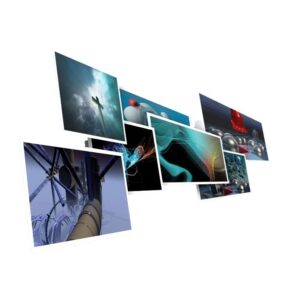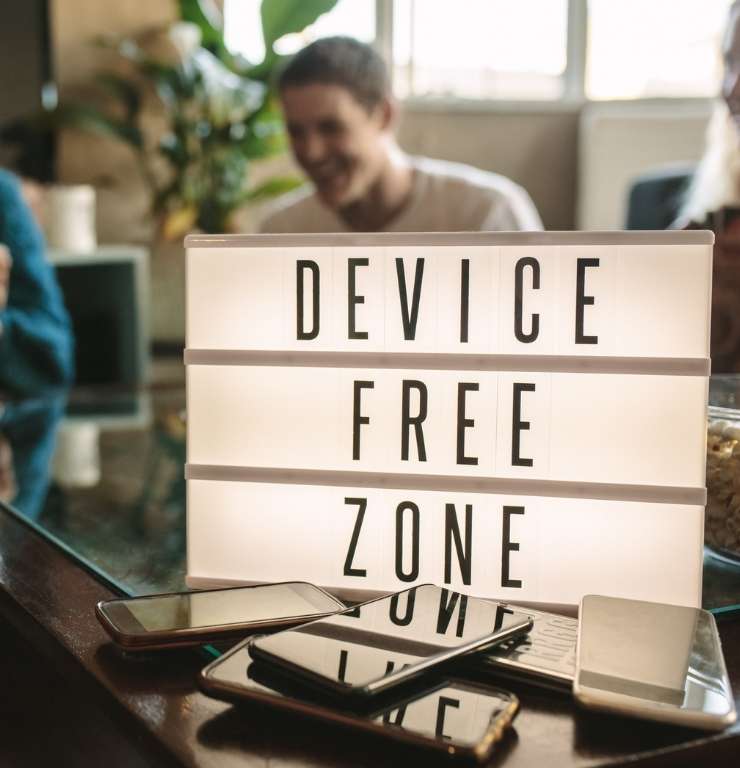
How what you wear speaks volumes
M
any years ago, I worked with a financial analyst in the energy sector. She was to deliver a presentation to four separate audiences in LA, and the topic was “Why I Never Bought Enron.” The people she would be addressing were shareholders and board members.
We had a slam-dunk report for them but she was uneasy. These were all Ivy-league types and she was the daughter of a detective, from Queens. She felt the difference, keenly.
So I suggested we style her as one of them: pearls, sweater set, black headband etc. I told her it would help her feel more at ease and it did the trick.
She was relaxed, thoroughly prepared and able to stay in the moment. She got spontaneous applause at 3 of the 4 meetings.
What you wear when you’re presenting matters quite a bit. Before you can open your mouth, your appearance is sending out messages. Make sure that you know what those messages are saying.

Enough With the Phony Familiarity
T
rends in business communication shift with the times, as they should.
During my early days as a public speaking coach, the fad (never a good one) was to “Tell them what you’re going to tell them, tell them, and then tell them what you told them!” Pure bunk and fortunately no longer in vogue.
Being under lock down has had its own influence on how we talk shop, some good and some extremely vexing. I’ve been able to coach online classes on how to Upgrade Presenting Skills for Zoom, and the results are deeply gratifying- formerly shy, introverted senior level people have absolutely bloomed. Confidence is shored up. Meetings become engaging once people understand how to speak on/camera.
Now I’m seeing an annoying trend and to anyone out there who thinks it’s clever, think again. It’s e-mail abuse, in the form of familiarity:
“Hi Katie, I hope you’re doing alright and are in a good place…are you? You’ve probably noticed from my emails lately that…” These are from people I’ve either never heard from, or else haven’t heard from in a dozen years or more. So no, I haven’t noticed anything lately and this approach guarantees that I never will again.
Please don’t make that mistake out of sheer desperation. Or another type- my husband got a jocular work email, much the same fake friendly but with the added touch of the sender in a highly inappropriate outfit and pose.

Webinar Success Tips
W
hen I gave a webinar a few weeks ago, the subject of which was “Meetings You Won’t Want to Miss” I was shocked to learn that after speaking for 45 minutes on the subject… I still had 387 attendees and they had questions. About meetings??
Well…yes. And the point is that just about any subject can be made engaging if you make the right choices. In my case, I was asked to speak on the topic of meetings and I said I would but… I had misgivings. Meetings are boring, for the most part. People don’t like them. So I decided to state that at the very top-to confess my own negative impressions and take it from there. Choosing to open with the “elephant in the room” is stronger than ignoring it. If your topic is similarly bogged down with a negative reputation, it’s good to address it up front.
The other strong choice that I made was to include visual slides (cartoons, photographs etc) that were humorous. This works well for two reasons:

- images convey information much more quickly than words, so you don’t have to belabor the point
- the attendee is compelled to look at the screen, rather than just listening
The people running the event were able to see when attendees were actively engaged with their screens (I don’t know how as I wasn’t privy to that info) So in addition to having images to look at, I also had some simple bullet points on slides, which I did not read to them. It is the kiss of death, and most presenters make this common mistake. Listening to someone else read what is already written is dull, and slows your pace way down. Instead, allow a few seconds of silence when the bullet points come up. That way your audience can read it in peace, and your comments can pick it up from there.
Webinars are one of the most challenging forms of presenting to pull off well. They require a lot of preparation, and an understanding of language, both written and spoken. But they are well worth it for their ability to enable you to connect with larger audiences and to take questions
One of the biggest points I got questions on was my suggestion to make all meetings “Device Free” and having a collection basket placed by the door. What a difference it makes, and can kill the desire for a meeting in the first place! I recently did this at a dinner party, and I don’t know who took it worse at first- the teenagers or the over 60 year olds. It turned into a great success, and no one got hurt in the process.


Is Your Voice Pleasing to the Ear, or a Turn-off?
“The human voice is the organ of the soul.” Henry Wadsworth Longfellow
My client recently recorded his first-ever webinar and then sent me a copy to review. He did a fantastic job and I was amazed at how smoothly he executed his delivery, because as I’ve said before, webinars are a breed apart when it comes to presenting skills. I called him right away to congratulate him. And you know what? He hadn’t even listened to it, saying “I hate the sound of my own voice.”

“Really? Well, if you don’t listen to playback, how can you even know what you sound like?” He didn’t have an answer for that, but said merely that he’s always felt that way. And he’s hardly alone. Many people that I work with have said the exact same thing. I’ve realized that it’s not so much that people don’t like their voice, as they’re not used to hearing it, as odd as that might seem in these days of ubiquitous recording devices. But it’s true. So when they do listen to playback, they’re often surprised at what they hear, but that should never lead to the conclusion of “I hate the sound of my voice.”
Don’t get me wrong-some voices are grating and unpleasant-one woman I know has a strident, high-pitched voice that’s like fingernails scraping across a chalk-board. It’s hard to listen to and even more difficult to hear what she’s got to say because of it…BUT, the majority of people sound just fine. To help you get past any resistance, I encourage you to record a sample of yourself reading from your favorite literature, a book, song, poem etc. Focus on the meaning of the words, rather than the sound of them.
When you listen to playback, you want to notice a few things:
- Pitch of your voice- this means how high or low in your vocal register you are. When we get nervous, the pitch of the voice can go up, because our vocal chords are muscles, and when they get tense, they tighten up.
- Pacing-this refers to how quickly or slowly we speak. Again, when nervous, the pacing can often pick up to a point that it’s hard to follow the speaker.
- Upward or downward inflection- this is usually at the end of a sentence, and it means you are completing your thought on an up note, as if asking a question, or on a downward note, as in making a statement.
- Vocal fry- this drives me right around the bend. It’s when people try to sound husky and speak in an unnaturally lower register. It used to occur mostly among younger men trying to infuse a bit of gravitas into their sound, but now women are doing it too.
In these days of texting and emailing, the person who picks up the phone to communicate is ahead of the pack. You can convey and receive much more information using the voice…it’s more nuanced and you get the meaning of the words, but also the energy and intention that go along with them. Is your voice accurately conveying what’s in your soul, as Longfellow suggests?

Using Speaker Slides for a Smashing Success.
The first step to creating a riveting slide deck for a PowerPoint presentation is to step away from the computer! Instead, go for a walk, a swim, a yoga class-anything that will let your brain come out to play.
- Get clear on what you want to say, and always remember, “It’s not about you, it’s about your message.” (that’s my quote and I spout it endlessly because it’s true).
- Determine how you can best express the message verbally.
- Decide which visuals will complement the verbal.
Audiences can most easily remember pictures and stories, so use a photo, or diagram or drawing to illustrate the story…i.e. one financial analyst I coached told a story about visiting a microchip factory in Ireland, so I had him include a few pictures from his trip…much more interesting than graphs and charts.

- NEVER read the slides to the audience. This is the single biggest mistake I see. You are only competing with yourself for their attention when you do this. Instead, when a slide with bullet points comes up, give them 3-4 seconds of silence so they can read them. Then, pick up the conversation from there.
- Slides should never be busy-it defeats the purpose. Less is more, and more is less.
- Bulleted points should not exceed 3-5 per slide; just make another slide if you have more.
Font and background colors should contrast well and be easy on the eyes; you can use your color palette to set a mood- i.e. using a light green background for a presentation on environmental health.
When slides are used the right way, the presentation will soar. One client just gave a talk with slides about her 5 day wilderness training as a way to mend her heartache over her divorce. The story alone is remarkable, but with pictures it was a smash hit and two people in the audience immediately invited her to be guest speaker at their events. It doesn’t get better than that!
